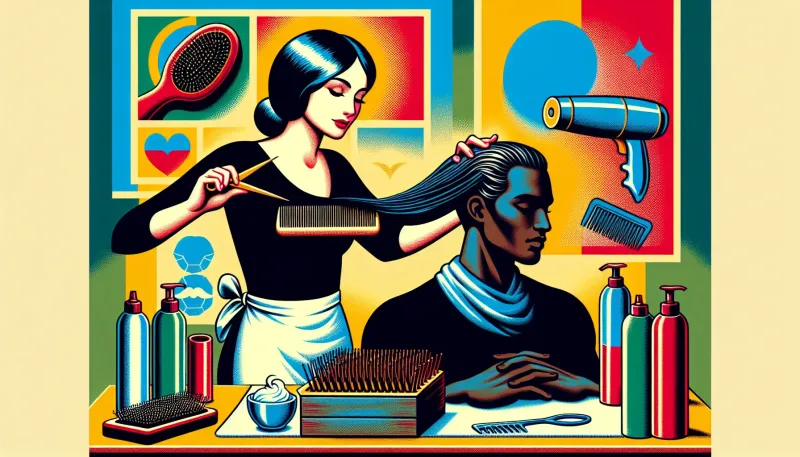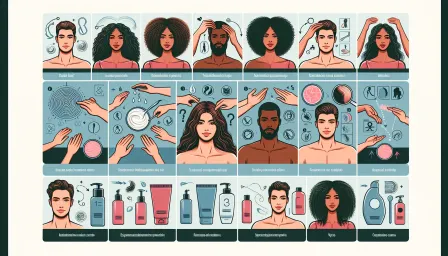Expert Thinning Hair Detangling Tips for Tangle-Free Locks

Find expert advice and effective thinning hair detangling tips to manage and care for fragile, tangled locks. Learn how to achieve tangle-free hair.
Thinning hair can present numerous challenges, with tangling being one of the most common issues. The delicate nature of thinning hair requires gentle care and effective techniques to maintain its health. In this article, we will provide expert thinning hair detangling tips to help you achieve tangle-free locks.
Understanding Thinning Hair
Thinning hair occurs when the diameter of individual hair strands decreases or when overall hair density reduces. Several factors contribute to hair thinning, including genetics, aging, hormonal changes, nutritional deficiencies, and health conditions.
Causes of Hair Thinning
To effectively manage thinning hair, it’s crucial to understand its causes. Here are some common causes of hair thinning:
- Genetics: Hereditary hair loss affects both men and women.
- Aging: Natural aging processes lead to hair thinning over time.
- Hormonal Changes: Hormonal imbalances caused by pregnancy, menopause, or thyroid issues can lead to thinning hair.
- Nutritional Deficiencies: A lack of essential nutrients like vitamins and minerals can weaken hair.
- Health Conditions: Certain medical conditions and medications can contribute to hair loss.
Thinning Hair Detangling Tips
Detangling thinning hair requires a gentle approach to prevent breakage and promote healthy hair growth. Here are expert tips to help you detangle thinning hair effectively:
1. Use the Right Tools
Invest in the right tools to make detangling easier and minimize damage:
- Wide-Tooth Comb: A wide-tooth comb is essential for detangling without tugging or pulling.
- Detangling Brush: A detangling brush with flexible bristles can gently remove knots.
- Leave-In Conditioner: Use a leave-in conditioner to add slip and reduce friction.
2. Detangle Hair When Wet
Detangling wet hair is generally easier as it provides more elasticity. Here’s how to do it:
- Apply a generous amount of conditioner or a detangling spray to wet hair.
- Use your fingers to gently work through the knots, starting from the tips and working your way up to the roots.
- Follow with a wide-tooth comb or detangling brush, beginning at the ends and gradually moving up.
3. Section Your Hair
Sectioning your hair makes detangling more manageable and minimizes the risk of breakage:
- Divide your hair into small sections using hair clips or ties.
- Work on one section at a time, applying detangling products as needed.
- Gently comb through each section from ends to roots.
4. Avoid Overwashing
Overwashing can strip hair of natural oils, making it more prone to tangling:
- Wash your hair two to three times a week with a sulfate-free, moisturizing shampoo.
- Use a conditioner or deep conditioning treatment to nourish and soften hair.
5. Protect Your Hair While Sleeping
Prevent nighttime tangles by taking protective measures while you sleep:
- Use a silk or satin pillowcase to reduce friction.
- Braid your hair or tie it into a loose bun before bed.
- Consider wearing a silk or satin bonnet while sleeping.
6. Handle Hair Gently
Minimize breakage by handling your hair with care:
- Avoid rough towel drying; instead, gently squeeze out excess water and pat dry with a microfiber towel.
- Be cautious when styling; avoid tight hairstyles that can pull on fragile strands.
- Limit the use of heat styling tools; use them on the lowest heat setting if necessary.
7. Nourish Your Hair from Within
Healthy hair starts with a healthy diet. Ensure you’re getting the necessary nutrients for hair growth:
- Protein: Consume protein-rich foods like eggs, lean meats, and legumes.
- Vitamins and Minerals: Ensure an intake of essential vitamins and minerals, such as vitamin D, biotin, zinc, and iron.
- Omega-3 Fatty Acids: Include sources like fish, flaxseeds, and walnuts in your diet.
Additional Hair Care Tips for Thinning Hair
Aside from detangling, there are other hair care practices you can adopt to keep your thinning hair healthy:
1. Regular Trims
Keep split ends at bay by getting regular trims every 6-8 weeks. This prevents further breakage and keeps your hair looking healthy.
2. Avoid Tight Hairstyles
Opt for loose and gentle hairstyles to prevent unnecessary stress on your hair follicles.
3. Choose Hair-Friendly Products
Select hair care products formulated for thinning hair. Look for ones that add volume and strength without weighing down your locks.
4. Stay Hydrated
Hydration is key to overall health, including your hair. Drink plenty of water to keep your scalp and hair hydrated.
5. Minimize Chemical Treatments
Limit chemical treatments like coloring, perming, and relaxing, which can weaken your hair. If you must use them, ensure they are done sparingly and with professional guidance.
Conclusion
Managing thinning hair requires a delicate and knowledgeable approach to prevent further damage and promote healthy growth. By following these expert thinning hair detangling tips, you can keep your locks tangle-free and in great condition. Remember to handle your hair gently, use the right tools, and nourish it from the inside out for the best results.



























